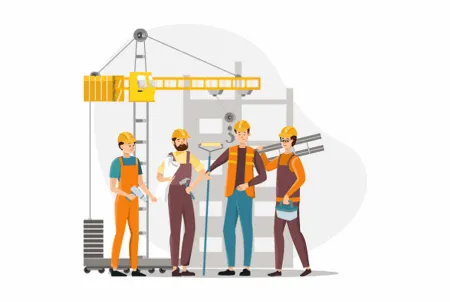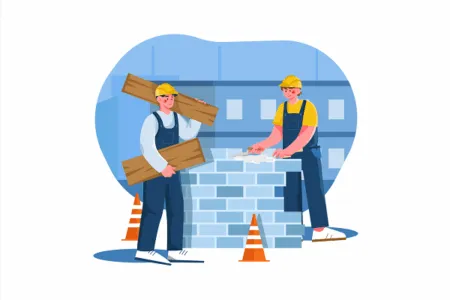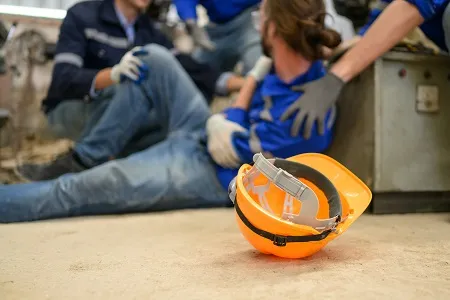What is Workplace Health and Safety?
Workplace health and safety ‘WHS’ is also known as occupational health and safety ‘OHS’ refers to the policies, procedures, and processes that protect workers from potential workplace hazards. These hazards may range from physical dangers associated with machinery operations to psychological hazards like stress and bullying.
Common Workplace Hazards
Common Hazards can be categorised into:
- Physical: Includes slips, trips, falls, machinery accidents, and electrical hazards.
- Chemical: Exposure to harmful chemicals and other toxic materials and substances.
- Biological: Contact with bacteria, viruses, or other harmful microorganisms, often prevalent in healthcare settings.
- Ergonomic: Improper desk setups leading to strains, carpal tunnel syndrome, or other musculoskeletal disorders.
- Psychosocial: Stress, workplace bullying or any other issue affecting worker’s mental well-being.
Step 1: Risk Assessment
Risk assessment involves identifying and evaluating potential hazards and then implementing measures to counteract or eliminate each identified hazard. It’s an ongoing process.
Step 2: Implementation
Training: Workers should undergo regular training sessions to understand safety measures, the operation of machinery and emergency protocols. Online inductions can be utilised to deliver some of such material to new workers and contractors.
Personal Protective Equipment (PPE): Workers might need safety gear like steel-toe boots, helmets, googles, gloves, long sleeve shirts or eye protection.
Clearly Visible Signage: Signs indicating forklift traffic, machinery operation, high noise levels, confined spaces and labels for hazardous chemicals are a vital part of reducing workplace risks.
Regular Maintenance: Machinery and any equipment should undergo regular checks and maintenance to ensure they’re safe and in optimal working condition.
Psychosocial Hazards
Unlike physical hazards, psychosocial risks are often intangible and harder to pinpoint. Strategies include:
- Conducting regular employee surveys to gauge workplace morale.
- Offering counseling services or Employee Assistance Programs (EAP).
- Ensuring a clear policy against harassment and bullying with defined channels for reporting.

Embracing New Technologies
Modern tech offers various tools for enhanced Workplace Health and Safety:
- Software for Risk Assessment: Digital platforms can help assess and manage risks, streamlining the process and ensuring accuracy.
- Online Training: Induct For Work online induction software can be used to upload onboarding material including safety procedures.
- Remote Monitoring: Sensors and cameras can be used to monitor machinery, alerting teams of any malfunction.
Step 3: Emergency Protocols
Despite best efforts emergencies can still occur and it is essential to have emergency protocols in place, such as:
- Regular fire and evacuation drills
- Accessible first-aid kits and trained personnel
- Clear emergency exits and assembly points
- Easily available Incident Reporting System
Importance of WHS
Legal Implications: Countries around the world have specific laws and regulations governing workplace safety. Non-compliance can result in hefty penalties, legal actions, and even business closures.
Financial Impact: Accidents can be costly. There are direct costs like medical expenses and indirect ones such as decreased productivity, damage to company reputation, and increased insurance premiums.
Employee Morale and Retention: Safe environments enhance employee morale. Workers are more likely to stay with a company that values their contribution and well being.

Conclusion
Workplace Health and Safety (WHS) involves managing risks to the health and safety of everyone in a workplace, including workers, contractors, customers, visitors and suppliers. It is also known as occupational health and safety (OHS or OH&S). The purpose of WHS is to improve work health and safety and reduce the risk of work-related injuries and fatalities. Any person at a workplace, including customers and visitors must take reasonable care of their own health and safety and that of others who may be affected by their actions.
WHS isn’t a one-time effort. Regular audits and assessments ensure that the system remains robust and evolves with changing workplace dynamics.



